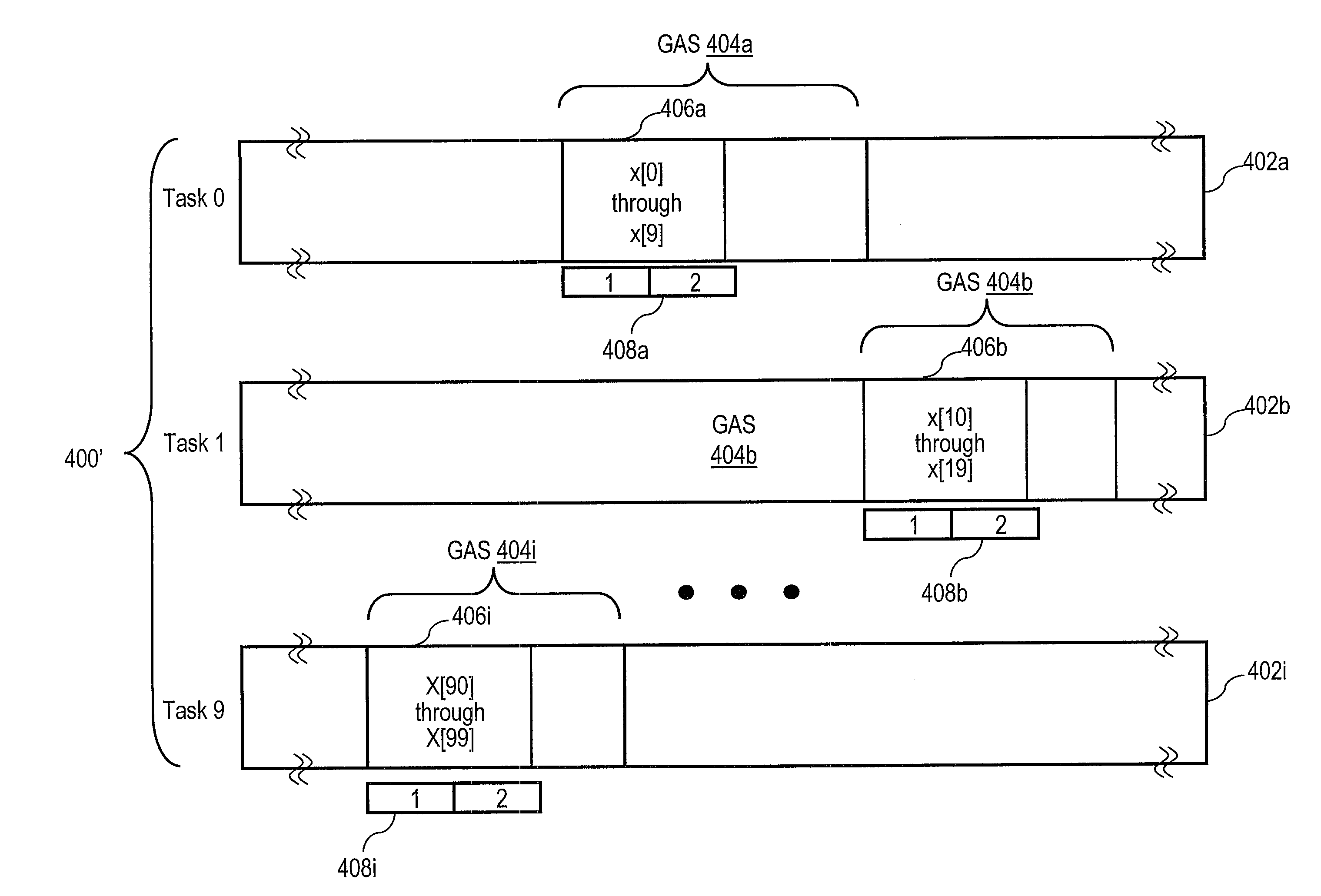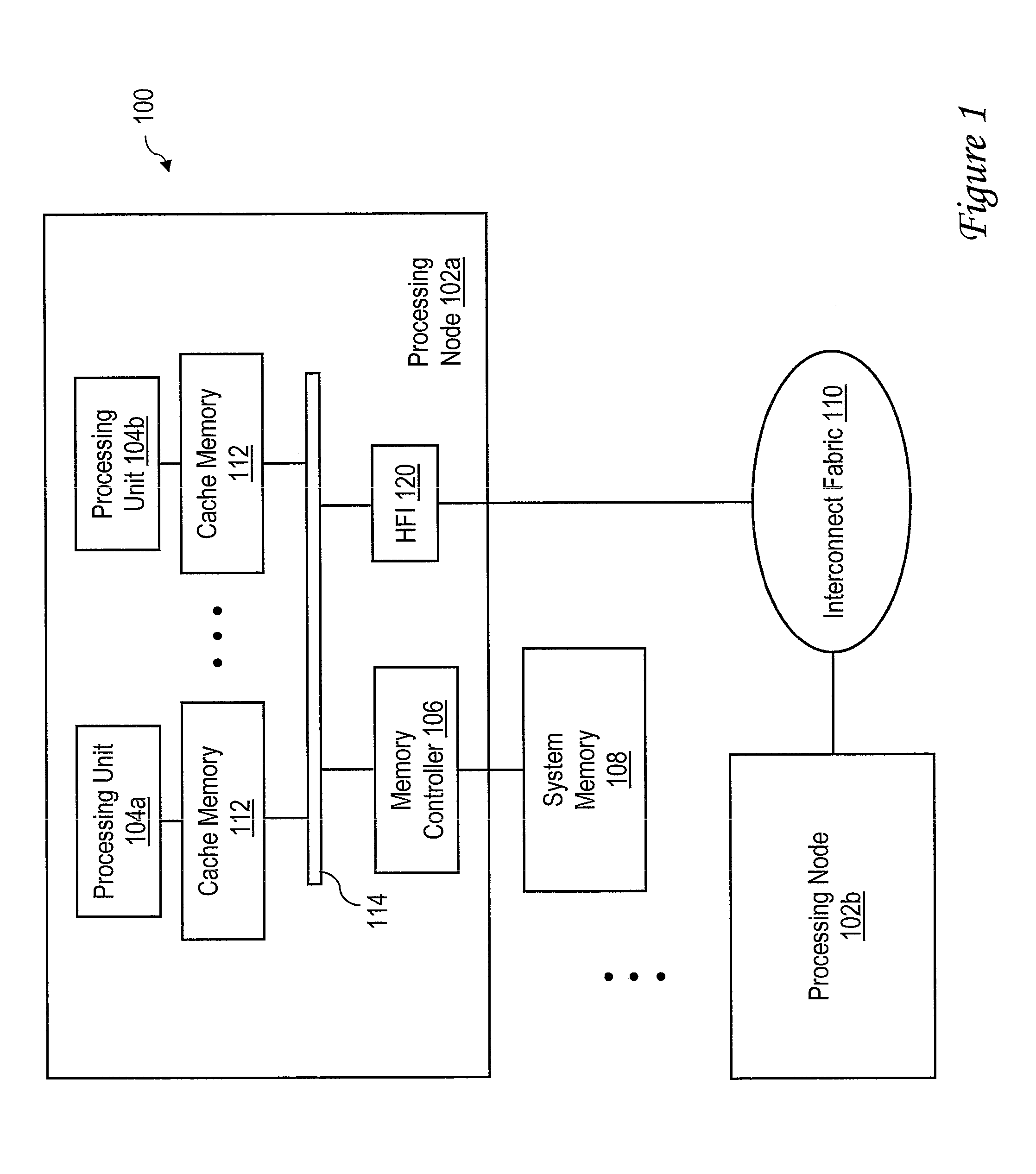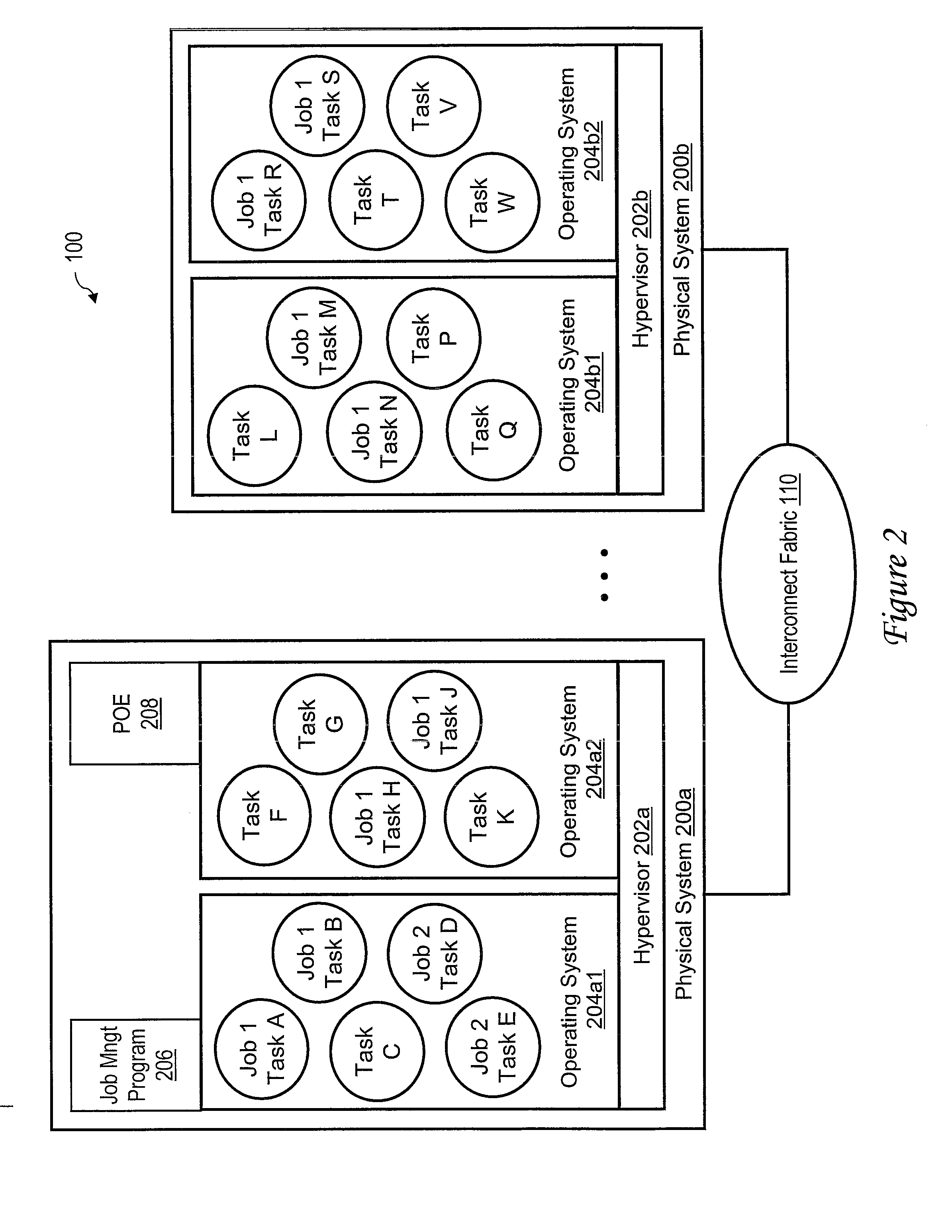Method, System and Program Product for Allocating a Global Shared Memory
a global shared memory and memory technology, applied in the field of data processing, can solve the problems of smp computer systems with limited scalability, many smp architectures suffer to a certain extent from bandwidth limitations, and suffer significantly higher access latencies for data contained in system memories
- Summary
- Abstract
- Description
- Claims
- Application Information
AI Technical Summary
Benefits of technology
Problems solved by technology
Method used
Image
Examples
Embodiment Construction
[0020]With reference now to the figures, wherein like reference numerals refer to like and corresponding parts throughout, and in particular with reference to FIG. 1, there is illustrated a high-level block diagram depicting a first view of an exemplary data processing system 100 in which the present invention may be implemented. As shown, data processing system 100 includes multiple processing nodes 102a, 102b for processing data and instructions. Processing nodes 102 are coupled via a host fabric interface (HFI) to an interconnect fabric 110 that supports data communication between processing nodes 102 in accordance with one or more interconnect and / or network protocols. Interconnect fabric 110 may be implemented, for example, utilizing one or more buses, switches and / or networks.
[0021]As utilized herein, the term processing node (or simply node) is defined as the set of computing resources that form the domain of a coherent operating system (OS) image. For clarity, it should be u...
PUM
 Login to View More
Login to View More Abstract
Description
Claims
Application Information
 Login to View More
Login to View More - R&D
- Intellectual Property
- Life Sciences
- Materials
- Tech Scout
- Unparalleled Data Quality
- Higher Quality Content
- 60% Fewer Hallucinations
Browse by: Latest US Patents, China's latest patents, Technical Efficacy Thesaurus, Application Domain, Technology Topic, Popular Technical Reports.
© 2025 PatSnap. All rights reserved.Legal|Privacy policy|Modern Slavery Act Transparency Statement|Sitemap|About US| Contact US: help@patsnap.com



